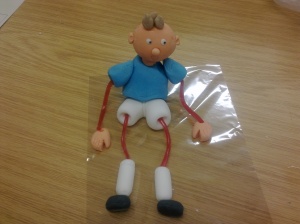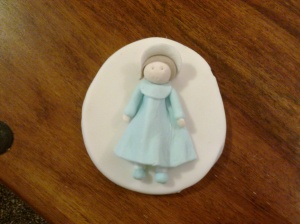
Well, I finally got round to decorating the Christmas cake I made in December – and it almost looks too good to eat!
I’ve had this recipe from Asda magazine for a Christmas decorated with rather crazed-looking penguins for a few years, but have never quite got round to making it. So, I’m very pleased to have finally attempted it with a moderate level of success.

The cake had matured for around 2 months before I decorated it, and I diligently fed it brandy every week over that period. Thankfully, it turned out to be sturdy enough to hold the weight of the icing, despite all the booze!
I started off by covering the cake with marzipan, then a layer of sugarpaste. I deviated from the recipe here as it called for more sugarpaste to create an iceberg/ravine scene, but I felt it would make for ridiculously thick icing, so I kept it simple.

Then my boyfriend and I started on the fun task of creating the penguins. This was fairly easily done with pre-coloured icing and a couple of cake decorating tools to help with cutting and placing tiny, tiny blobs of icing on other tiny blobs of icing.
We also made piles of snowballs to show that the penguins were in the middle of a snowball fight, and a snow penguin just for fun! My favourite bit is the ‘secret’ penguin on the cake board, who is definitely going to win the fight by popping up out of nowhere.

I was surprised at how easy it was to decorate the cake overall – despite taking a cake decorating course a couple of years ago, I have zero confidence in my ability to make cakes that actually look nice! I would love to attempt this again with another scene like this – would a woodland scene be too adventurous…?

So, what does the cake actually taste like? It does indeed taste like an extremely drunken Christmas cake! I shared it out with friends last night, and the brandy was the first thing we all commented on – not that the booziness detracts from the loveliness of the cake in anyway! It is extremely delicious, especially with the marzipan, and all the different kinds of fruit make for a great flavour. I’ll probably give it another go for next Christmas, albeit actually in time for December 25th!






